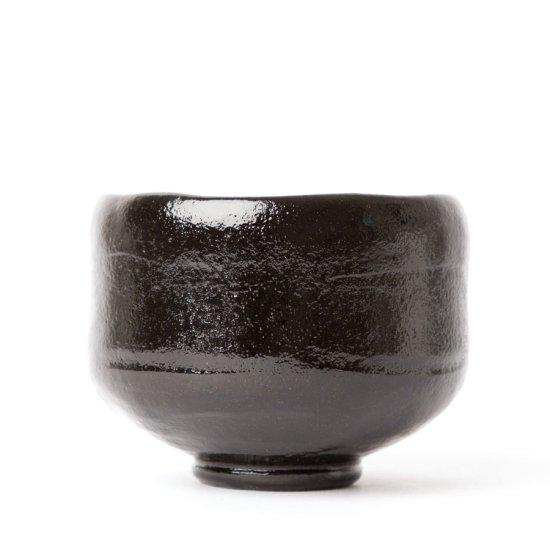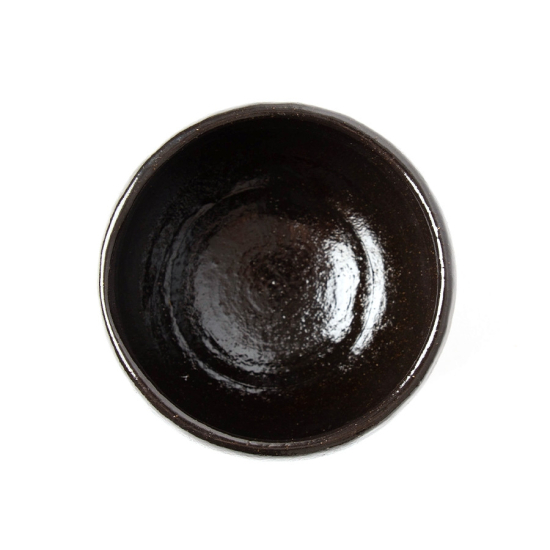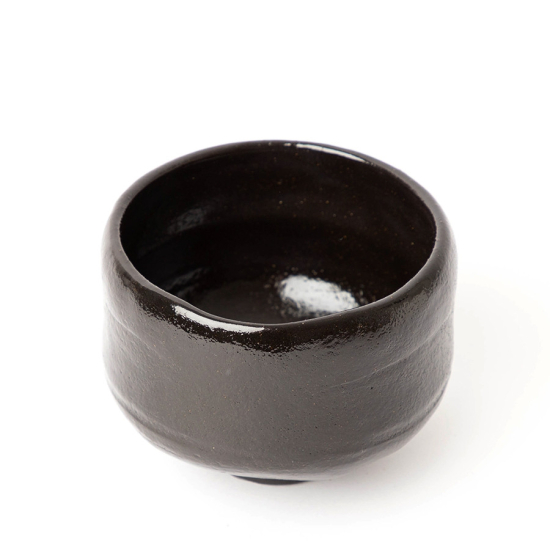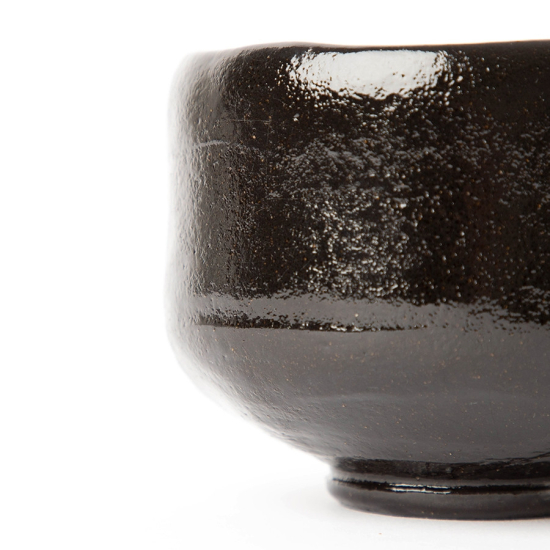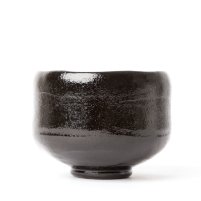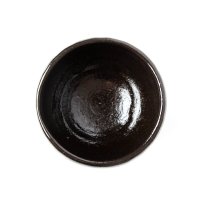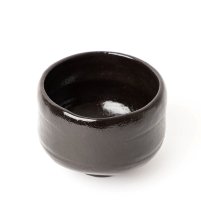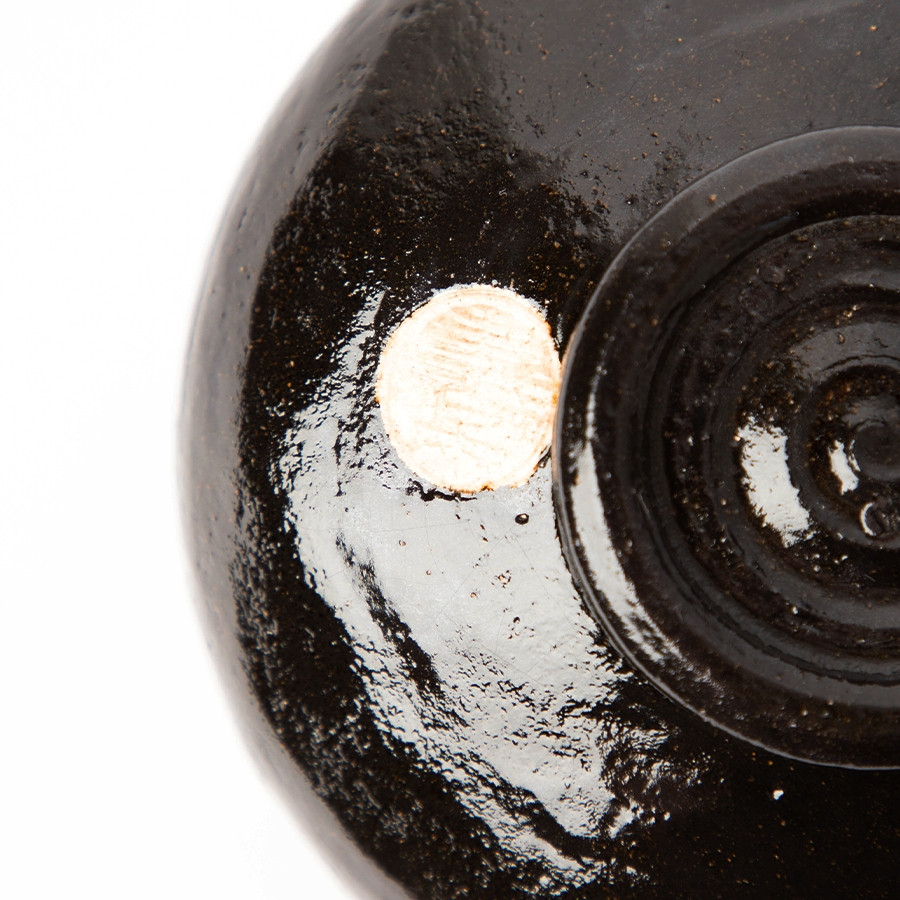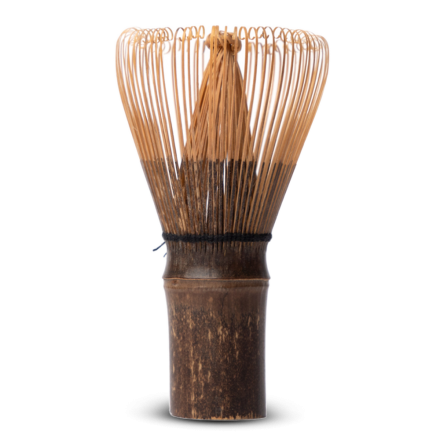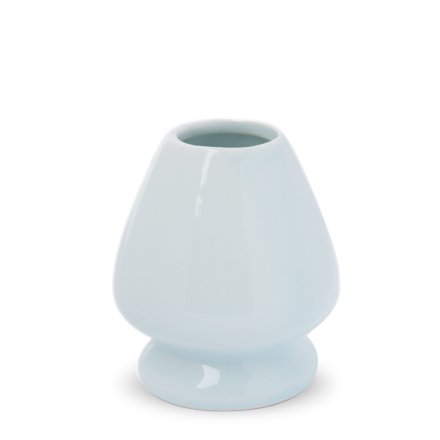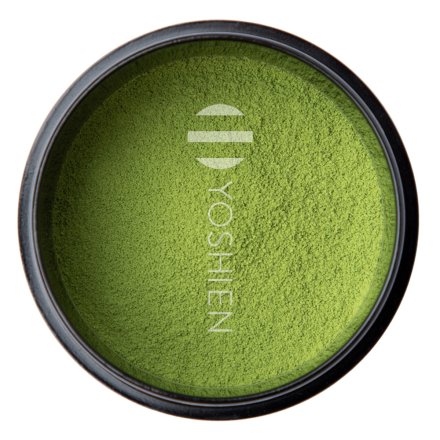Raku-Yaki 楽焼
Raku-yaki is a Japanese term used to describe short-fired, lead-glazed pottery intended for tea ceremonies and usually freely moulded by hand. It was initially produced only in the colours red ("aka-raku") and black ("kuro-raku"). Later, white and amber and occassionally Oribe green raku bowls began to be produced. Red and black are considered the best complementary colours for the bright green matcha.
Raku bowls have a soft and warm feeling, and are capable of absorbing a lot of moisture, allowing them to gain patina and beauty over time. They are considered the most noble bowls for the tea ceremony. The first raku bowl is said to have been made around 1579 by the brickmaker Chōjirô under the guidance of the great tea master Sen no Rikyû. After his death, Chōjirô was honoured by Prince Hideyoshi by bestowing the raku seal on his successor, Jôkai. Since then, the Jôkai family has used the name Raku and still produces this exceptional tea pottery in Kyoto.
Kuro-Raku 黒楽
For black raku (kuro-raku; 黒楽), a special rough clay with a high iron and manganese content and sand from the Kamigawa River in Kyoto is used. The clay is dug and stored by the raku family for following generations. Several layers of glaze (kamogawa-ishi) are applied by cutting and pressing, and are finally covered with a raku transparent glaze. The firing temperature is relatively high at 1,200-1,250°C. The red hot bowl is removed after only 8-10 minutes, and is quickly cooled in the air. The result is a non-sintered, high-fired earthenware. Authentic kuro-raku bowls have a slight unevenness on the side where they are cut out.
It is thought that the special black shade of the bowl brings out the bright green of the matcha most clearly.



